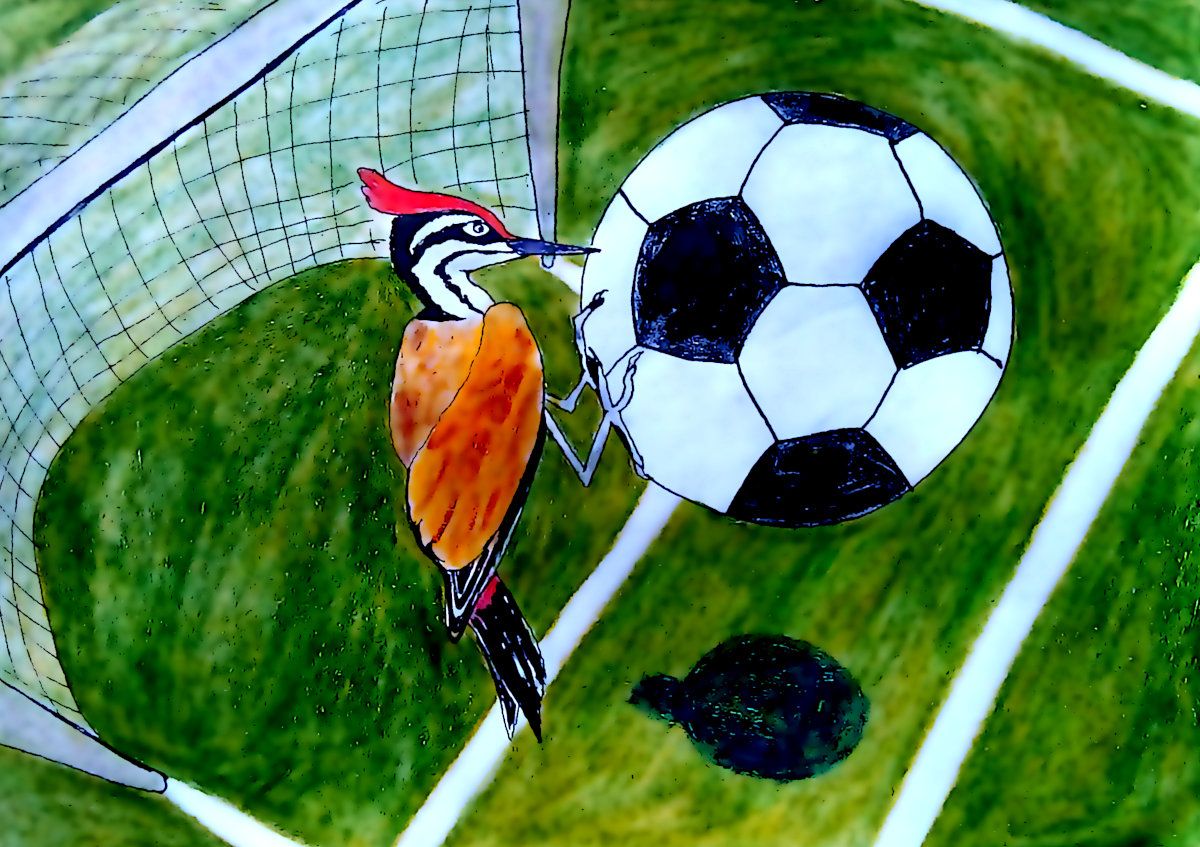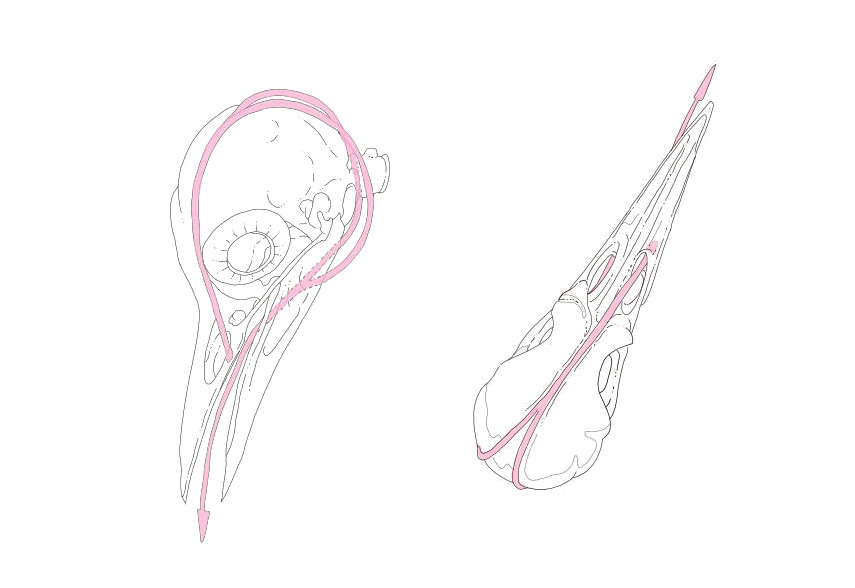Slosh Mitigation
Why don’t woodpeckers get concussions?

Why don’t woodpeckers get concussions?
“Here we go, ladies and gentleman, it’s the last ten minutes of the gaaame!! The last time we had such a close match was 20 years ago, as I’m sure many of you remember, back in 1998. Wait a minute, were some of you even born then?! Leeds United FC starts the game, Phillips passes to his left, Bamford takes it, he’s dribbling, he’s dribbling, oh watch out! Here comes the star of Brentford FC, Jansson he’s tackling he’s going for it, aand he’s got the ball! Well Bernie, aren’t you glad you came out today?”
Nervous anticipation grips all the fans, and they sit on the edge of their seats, waiting. Bernie, the other commentator, takes over.
“Well no one can say Jansson can’t dribble a ball! He passes it to Henry across the field, the ball is flying! Look at that football; what a magnificent arc, it’s curving right to him. Looks like he’s trying to head the ball. OH gosh, that doesn’t look right–are you seeing what I’m seeing Matt? The ball has curved far too much to the left and looks like Mbeumo is trying to head it too! I don’t believe it, looks like it’s going to be a collision–”
The game comes to a standstill, the audience is blessedly quiet for a moment - still in shock - but then they come to life; it’s chaos.
“Ouch, that must have hurt, the medics are here! Henry and Mbeumo have collided, it looks like quite a fierce head impact, that’s got to be one nasty concussion right there!”
Concussions, as you probably know, are a consequence of a sudden bump on the head. What you may not know is that they’re alarmingly common even when people have their helmets on.
As the most complex organ in a footballer’s body, the brain is very soft and fragile. It floats in spinal fluid: a thick liquid that surrounds the spinal cord and acts as a shock absorber of sorts, while also helping to exchange gases and remove waste. But what happens if the head in question moves back and forth and suddenly stops moving? If you’ve stood on a bus as it jerks to a halt, you can probably guess what comes next: the brain keeps moving, sloshing through the liquid, till it bumps into the skull. No armoured helmet can protect you from this, because it happens through pure momentum.
Concussions usually have temporary effects like memory loss and balance issues, but they can cause more permanent damage as well. So whether you’re helmeted or not, I think we can conclude that rapid banging on the head is bad news.
Unless you’re a woodpecker.
Woodpeckers bang their heads for a living. It’s how they remove wood from trees to access food. They also peck out wood to make nests and court mates, and use a rhythmic drumming to establish territory.
This drumming happens at around 6m/s, resulting in a deceleration force of about 1200 G. Human concussions happen at rates of between only 50-100 G. In short: woodpeckers peck wood at a force of almost ten times greater than what would cause a concussion in humans!
So, how do woodpeckers survive hammering their heads on trees, year after year? The answer lies in a combination of physics and biology, which work to perform ‘slosh mitigation’—literally, making sure the contents of your brain don’t slosh around too much.
Unlike humans, woodpecker brains completely fill the inside of the skull, and they don’t have spinal fluid: no space to rattle, so no repeated concussions. What’s more, the placement of the brain in the skull is such that a large area of the brain encounters the skull during impact–which is safer than a small patch of the brain taking most of the force from the impact. A larger area taking the force means a larger area for the force to dissipate through, so this feature functions as an efficient shock absorber.
A similar reasoning explains why slapping someone with the side of your hand is much harder than using the flat of your palm: both have the same amount of force, but in the second case that force is spread out over a larger area, making for less pressure all round. Now you know why knives are pointy.
Special adaptations aside, woodpeckers are also small enough that they have physics on their side.
The surface area to weight ratio of the woodpecker’s brain is tiny. And pressure is defined as force/area, which means the pressure formed during banging is small as well.
Woodpecker pecks are also much less wonky than plummeting footballs: they peck in a consistent straight line. Clinging fast to the tree with their sharp claws, and using their firm tails to support their postures, the birds keep themselves perpendicular to the trunk while pecking.
If we take pecking in a straight line, for example, the force is directed through the whole beak of the bird and not elsewhere. By using its sharp claws to cling firmly to the tree, and its firm tail to support its posture, the bird can remain perpendicular to the trunk while pecking. This helps because—from a physics perspective—the impact created by their beaks has to go somewhere: every action has an equal and opposite reaction. If they were pecking wonkily, some of this would become a rotational force or “torque”, travelling sideways and pushing back for nothing useful. By pecking straight, woodpeckers make sure every ounce of energy goes towards hitting the tree.
How does the force not travel through the beak and damage the skull? Interestingly, woodpeckers have another physiological adaptation that ensures this does not happen.
A microscopic study of a woodpecker's brain revealed that they have thinner trabeculae. Trabeculae are tiny beamlike projections of bone that form the mineral mesh that makes up the spongy bone plate. During impact, they deform, absorbing the energy and thus preventing a concussion!
Also, a large beak and thick strong neck muscles mean that a larger region takes the impact of the blow and redirects it downwards - before it even reaches the brain.
Another crucial physiological feature is the hyoid bone. In the human body, the hyoid bone is located near the middle of the neck. However, in the woodpecker, the bone wraps all the way around the actual skull. Simply, in woodpeckers, this bone restricts movement of the brain within the skull, thus ensuring slosh mitigation and preventing impact injuries.
The posterior section of the hyoid bone is very flexible—meaning it can take a lot of force without breaking.
The hyoid bone also supports the woodpecker’s long tongue. The woodpecker has a tongue that is longer than its skull. Unlike human tongues which are made of muscle, most birds have tongues that are rigidly supported by a bone and cartilage skeleton, or like mentioned above, the hyoid apparatus.

With woodpeckers, their tongues don’t rest just beneath the skull. Instead, the base of the tongue is attached to its right nostril, from where it wraps around the skull, under the jaw and through the mouth opening.
Because the tongue wraps around the brain, it evenly distributes the shock from impact vibrations.
Just because they have all these fancy adaptations doesn’t mean woodpeckers’ brains are completely safe.
Studies conducted have shown a positive accumulation of the protein ‘Tau’ in woodpeckers’ brains - this protein is a marker for brain damage in humans. This feature is still being studied and we do not know much about it.
Research is still being conducted to understand the structure of shock absorbing mechanisms in woodpeckers. This can help engineers design helmets and safety mechanisms for more dangerous human activities such as extreme sports.
“Just heard back from the medics, seems like quite the concussion for both the gentlemen. Let’s hope they will both be back on their feet soon enough. And now for the substitutes Canós, and Leadbitter joining the team on the field; fasten your seat belts, the game is not over yet!”
So, is it actually that easy for a footballer to get a concussion? Not quite.
If it’s soccer (or football, as Indians call it), there’s less chance of getting a concussion: only 22% of soccer injuries are concussions. However, if it’s American football we’re talking about, the risks are greater, mainly because helmet-to-helmet contact is a common occurrence.
The jarring impact makes the players’ heads whip back, and—well—the slosh happens without the mitigation.
